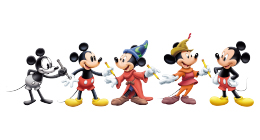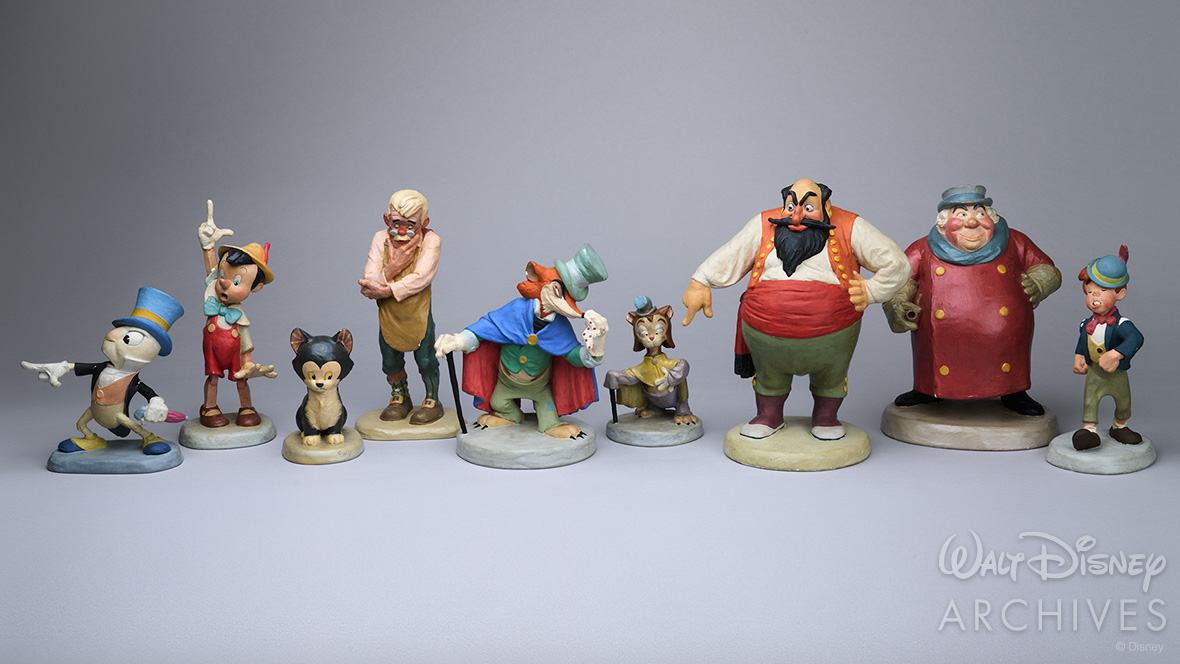By Taylor Larsen, Walt Disney Archives
“Hi diddle dee dee!” As we reach the milestone 85th anniversary of Walt Disney’s Pinocchio, the Walt Disney Archives looks back at some “real-life” animator’s models that honor the story of the “real boy.” Join us for a historical journey as the Archives staff recreates an iconic photo taken long ago... no strings attached!
Directed by Disney Legends Ben Sharpsteen and Hamilton “Ham” Luske, Pinocchio premiered in New York on February 7, 1940. Based on Italian author Carlo Collodi’s classic morality fable, the animated film follows Geppetto (voiced by Christian Rub), a kindly old toymaker who has satisfied his yearning for a son by carving a wooden puppet named Pinocchio. One evening, in the glow of the shining starlight, the adorable wooden marionette is magically brought to life by the Blue Fairy (voiced by Evelyn Venable). She promises the eager Pinocchio (voiced by Disney Legend Dickie Jones) he can become a real boy if he earns it—and his newly appointed conscience, Jiminy Cricket (voiced by Disney Legend Cliff Edwards), is enlisted to help guide the eager puppet down the straight and narrow. The film required the talents of some 750 artists, who produced more than two million drawings and used some 1,500 shades of paint for the Technicolor® production. As Walt Disney Archives founder and Disney Legend Dave Smith often pointed out, film historians have long described the production as the most beautifully realized and technically perfect of all the Disney animated features. In 1941, Pinocchio received two Academy Awards®—for Best Song (“When You Wish Upon a Star”) and Best Score.
With the success and expansion of his studio in the late 1930s, Walt Disney sought to bring even greater realism and refinement to his animated characters—and, in late 1937, he established the Character Model Department, which would oversee their design and development. The small group began in a single room on the second floor of the animation building at the former Disney studio on Hyperion Avenue. In addition to creating character model sheets, the artists produced dimensional sculptures that could be used as figural references for animators when laying pencil to paper. This newly formed department became essential to the creation of the memorable characters for Pinocchio.
As the newly appointed head of the Character Model Department, story artist and Disney Legend Joe Grant oversaw a modest team of sculptors who translated the early character sketches into beautiful Plasticine clay figures. The models were then cast in plaster with an underlying steel wire armature and finished by the Ink & Paint Department using opaque watercolors. Some of these models were then shellacked or lacquered. There would typically be multiples made of each model, which would become important reference tools for animators, and they were so beautifully crafted that Walt began gifting some of them to essential staff as souvenirs. Others eventually became permanent decorations in the offices of other employees—especially after the Character Model Department ceased operations in 1941.
Some 30 years later, on June 22, 1970, the Walt Disney Archives was established to collect, preserve, and make available for research the history of The Walt Disney Company. It’s remarkable that so many of the character models from the studio’s early years could soon be identified and find a permanent home in the Archives, where they have been safeguarded ever since.
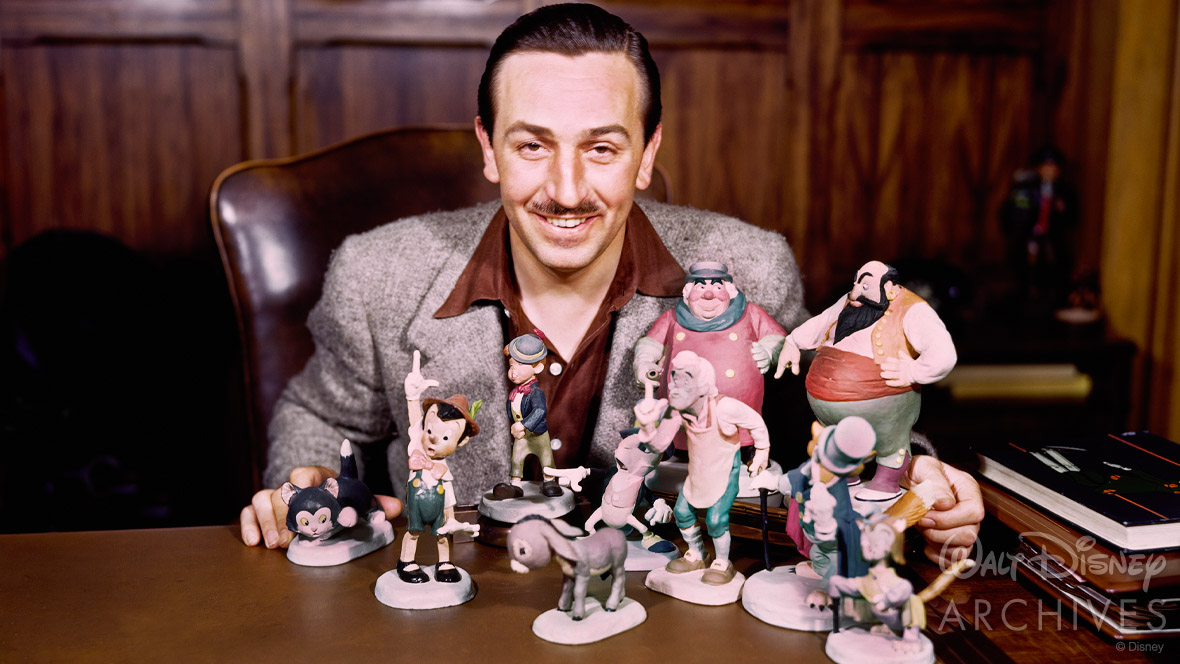
In addition to preserving dimensional objects of historical significance, the Archives also maintains an extensive photography collection. Among the millions of images is this publicity shot of Walt Disney, posing with a series of Pinocchio animator’s models at a desk at the former Hyperion studio. In an inspired experiment, the Archives staff selected versions of the characters pictured in the photo and restaged them for today’s audience using some strategic planning and placement. Although not all models are the same (multiple poses were made for some of the characters, which the Archives was fortunate to save), most were nearly a perfect match!
Leading this photography experiment was Ty Popko, Manager of Digitization for the Walt Disney Archives, who leveraged his expertise and advanced measurement tools to meticulously reposition the models as they appear in the original photograph. “Photography has the power to tell a story without words in a single frame,” Popko explains. “We collaborated to capture these maquettes in a way that anchors a minimal museum-style display to the context of a documented moment in our past. In turn, it lends some pixie dust to our historic image of Walt with clear detail and vibrant colors.”
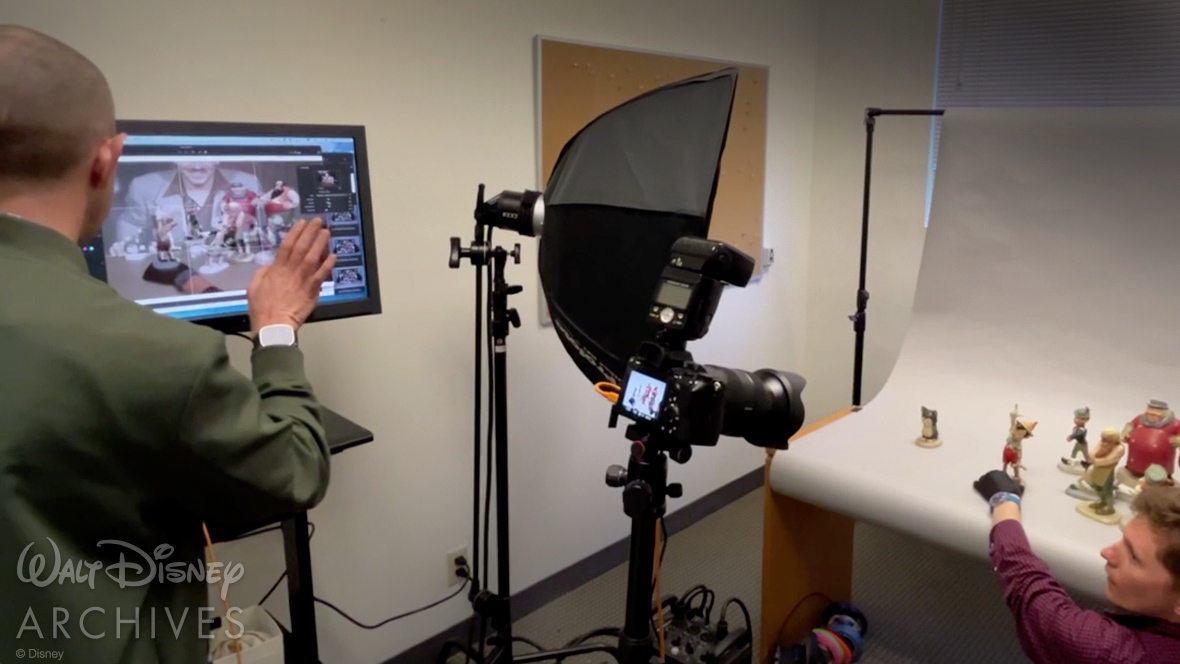
While participating in the session, Jeff Golden, Digital Capture Technician, quickly felt the moment was one of the highlights of his career: “As the overlay between the characters in front of Walt Disney looped back and forth over the images in front of my eyes... I felt connected to him,” noting how special it was to see versions of the characters carefully arranged as Walt once had them.
It felt as though Pinocchio’s very own Blue Fairy sprinkled her magic on the project, bringing new life to these 85+-year-old treasures: “Little [models] made of [clay], wake. The gift of life is thine.”
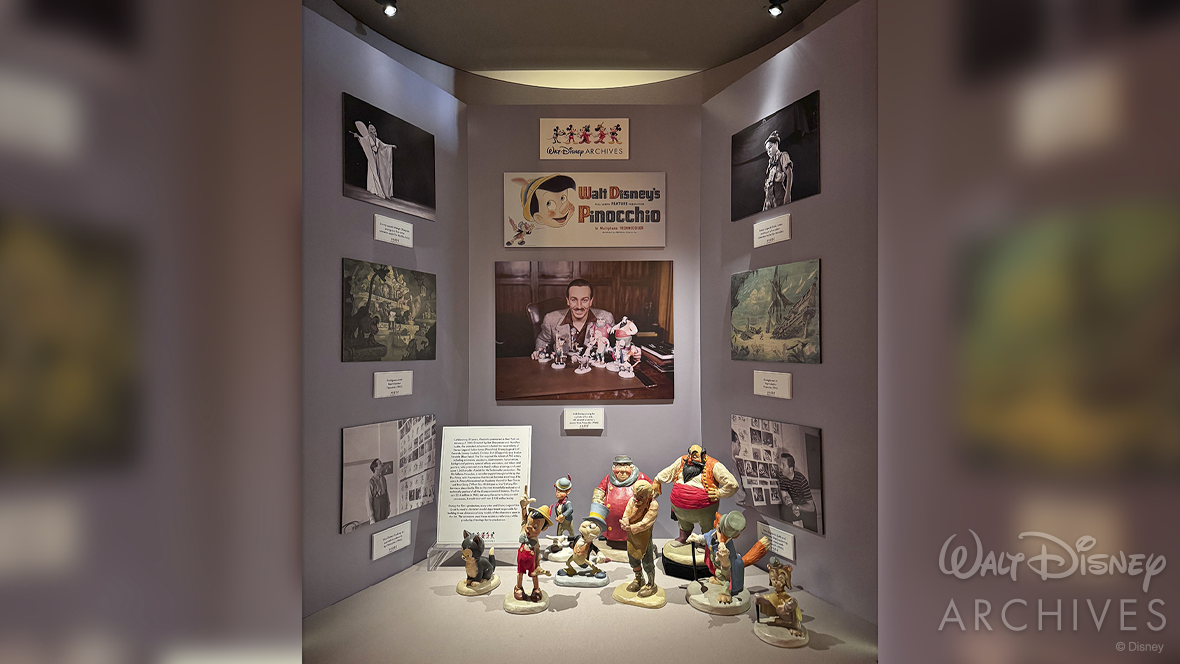
The Walt Disney Archives’ celebration of Pinocchio doesn’t end with this exciting photography project! Through early April 2025, guests visiting Disney California Adventure Park can see these original models on display at Carthay Circle Restaurant and Lounge.


